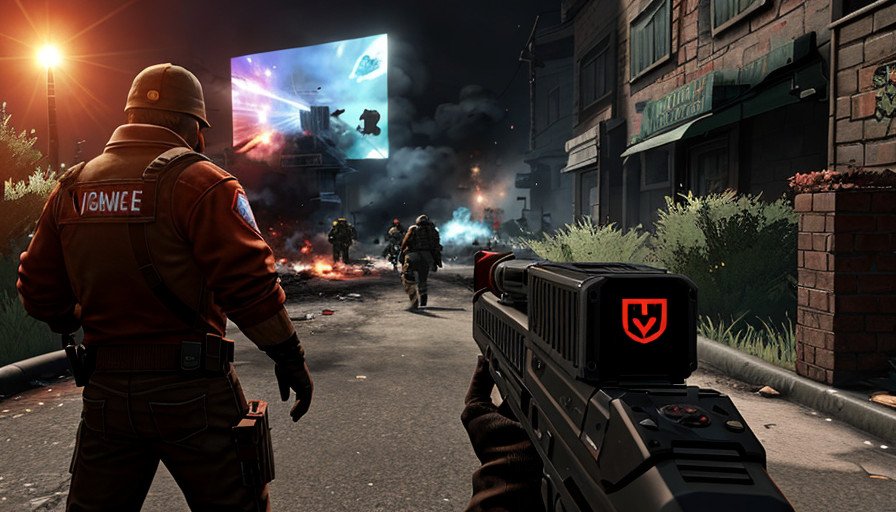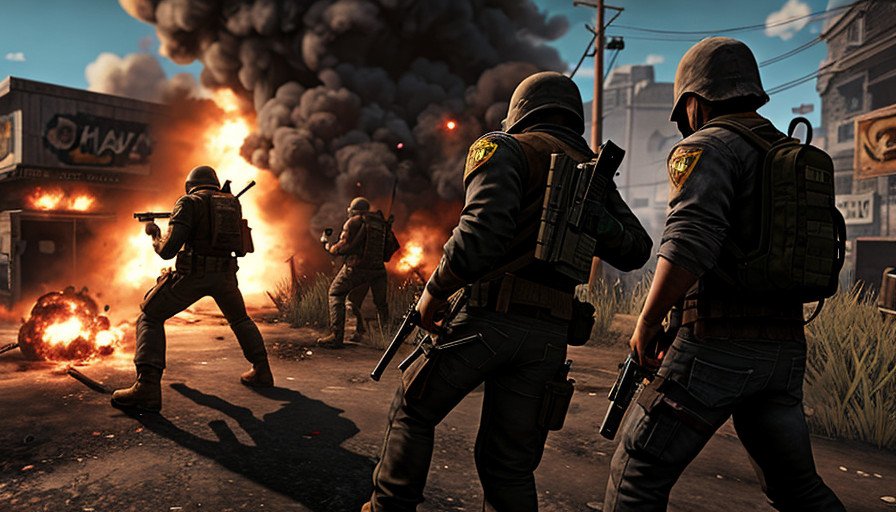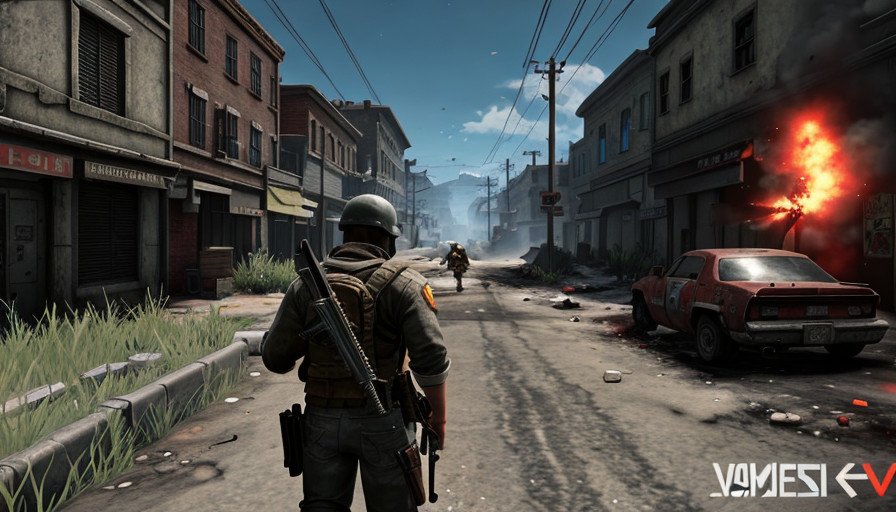The intersection of video game violence and social media has been a topic of intense debate. The question of whether violent video games can lead to real-world violence, and how social media can amplify this connection, is complex and multifaceted. This article aims to delve into these issues, exploring the intricate relationship between these two elements and their impact on society.
Firstly, we will discuss the connection between video game violence and aggression. Recent research has suggested that the link between violent video games and aggression is not as clear-cut as once thought.
Some studies have found no significant correlation between violent video game exposure and real-world aggression, suggesting that the connection may be influenced by a variety of factors, including the player’s personal characteristics and the context in which the game is played.
Next, we will explore the role of social media in potentially fueling violence. Social media platforms, with their vast reach and ability to spread content rapidly, can potentially contribute to violence by blurring the line between fiction and reality.
However, it’s important to note that this is not a direct cause-and-effect relationship, and other factors, such as the individual’s personality and environment, also play a significant role.

We will also discuss the mediating role of online social capital in this connection. Online social capital refers to the relationships and connections that individuals have in the online world.
Research has found that online social capital can mediate the relationship between in-game social interaction and gaming disorder, suggesting that the relationships and connections that individuals have in the online world can play a significant role in their gaming behavior and potentially their violent behavior.
Finally, we will conclude by summarizing the main points and emphasizing the need for further research to fully understand the relationship between violent video games, social media, and real-world violence.
The implications of this research are far-reaching, affecting not only individuals but also society as a whole. Therefore, it is crucial to continue exploring this complex issue and understanding its nuances.
Video Game Violence and Aggression: A Dubious Connection
Video games, particularly those that feature violent themes, have been a topic of debate for many years. Some researchers argue that exposure to violent video games can lead to increased aggression in players. However, others contend that this connection is dubious at best.
For instance, a study conducted by Washington State University found no significant correlation between violent video game exposure and real-world aggression.
The study suggested that the connection between violent video games and real-world violence is not straightforward and may be influenced by a variety of factors, including the player’s personal characteristics and the context in which the game is played.
The Role of Social Media in Fueling Violence
Social media platforms, such as Twitter and Facebook, have become an integral part of our daily lives. These platforms offer a platform for users to express their thoughts and ideas, and they can also be a source of information and entertainment. However, the use of social media can also have negative impacts, including the potential to fuel violence.
For example, a study published in the Journal of Psychiatric Times found that social media can potentially lead to violence in adolescents. The study suggests that exposure to violent content on social media can blur the line between fiction and reality, potentially leading to violent behavior.
However, it’s important to note that this is not a direct cause-and-effect relationship, and other factors, such as the individual’s personality and environment, also play a significant role.
The Connection Between Video Game Violence and Social Media Violence
While the relationship between violent video games and real-world violence is not entirely clear, it’s clear that social media can potentially contribute to violence. A study published in the journal PLOS ONE found that social media platforms can have a significant social impact, including the potential to fuel violence.

The study found that social media platforms can be used to spread misinformation and fuel hate speech, which can lead to increased violence. For example, a post on social media can be shared widely, potentially leading to a violent reaction among those who see the post.
Additionally, social media platforms can be used to organize and recruit for violent activities, potentially leading to increased violence.
The Mediating Role of Online Social Capital
The role of online social capital in the connection between video game violence and social media violence is also worth exploring. Online social capital refers to the relationships and connections that individuals have in the online world.
Research has found that online social capital can mediate the relationship between in-game social interaction and gaming disorder.
For example, a study published in Frontiers in Psychology found that online social capital could mediate the relationship between in-game social interaction and gaming disorder. The study found that in-game social interaction was positively correlated with online social capital and gaming disorder.
This suggests that the relationships and connections that individuals have in the online world can play a significant role in their gaming behavior and potentially their violent behavior.
The Influence of Media Violence on Real-World Aggression
Media violence, which includes violent video games, can have significant impacts on real-world aggression. A study published in the journal “Psychological Science” found that exposure to media violence can lead to increased aggression.
This is because media violence can prime aggressive concepts, making aggression more likely. Furthermore, repeated exposures to emotionally activating media or video games can lead to habituation of certain natural emotional reactions, a process called “desensitization”.
This means that negative emotions experienced automatically by viewers in response to a violent scene decline in intensity after many exposures. As a result, individuals can think about and plan proactive aggressive acts without experiencing negative affect.
The Desensitization Effect of Media Violence
The desensitization effect of media violence is a significant concern. Research has found that exposure to media violence can desensitize people to violence in the real world.
This means that for some people, watching violence in the media becomes enjoyable and does not result in the anxious arousal that would be expected from seeing such imagery. This could potentially lead to a lack of concern or fear when faced with real-world violence, making them more likely to engage in violent behavior.
The Role of Video Games in Shaping Interpersonal Violence
Video games, particularly those that feature violent themes, can significantly shape interpersonal violence. These games can provide a platform for players to engage in violent activities, which can potentially lead to increased aggression in real-life interactions.
For instance, a study published in the Journal of Adolescent Health found that violent video games can contribute to interpersonal violence among adolescents. The study suggests that exposure to violent video games can lead to an increase in aggressive behavior, which can potentially translate into real-world violence.
The Impact of Social Media on Video Game Violence
Social media platforms, such as Twitter and Facebook, can also contribute to video game violence. These platforms can be used to share violent video games, providing exposure to violent content to a wider audience.

This can potentially lead to an increase in violent video games, which can in turn lead to an increase in real-world violence. However, it’s important to note that this is not a direct cause-and-effect relationship, and other factors, such as the individual’s personality and environment, also play a significant role.
The Connection Between Media Violence and Real-World Violence
While the connection between media violence and real-world violence is not entirely clear, it’s clear that media violence can potentially contribute to violence. A study published in the journal PLOS ONE found that media violence can have a significant social impact, including the potential to fuel violence.
The study found that media violence can be used to spread misinformation and fuel hate speech, which can lead to increased violence.
For example, a post on social media can be shared widely, potentially leading to a violent reaction among those who see the post. Additionally, media violence can be used to organize and recruit for violent activities, potentially leading to increased violence.
Conclusion
While the connection between violent video games and real-world violence is not entirely clear, it’s clear that social media can potentially contribute to violence.
However, it’s important to remember that other factors, such as the individual’s personality and environment, also play a significant role in determining their behavior.
Further research is needed to fully understand the relationship between violent video games, social media, and real-world violence.You should read another article i wrote about >>>> Beyond the Screen: The Role of Influencers in Shaping the Narrative on Video Game Violence to learn more.






